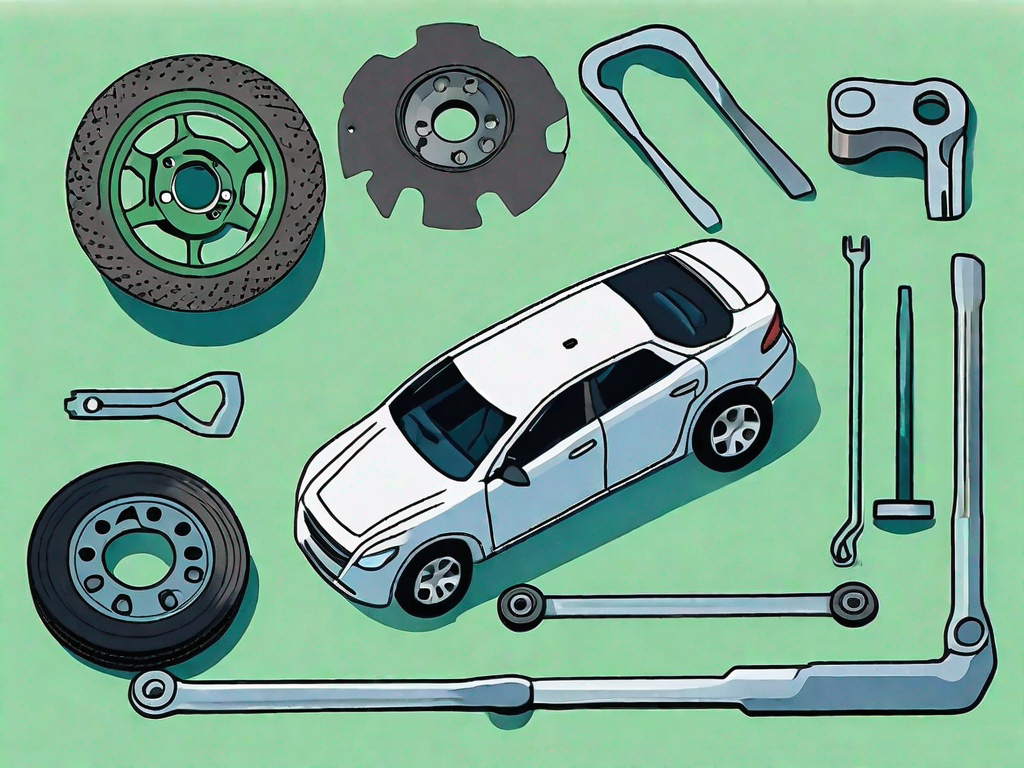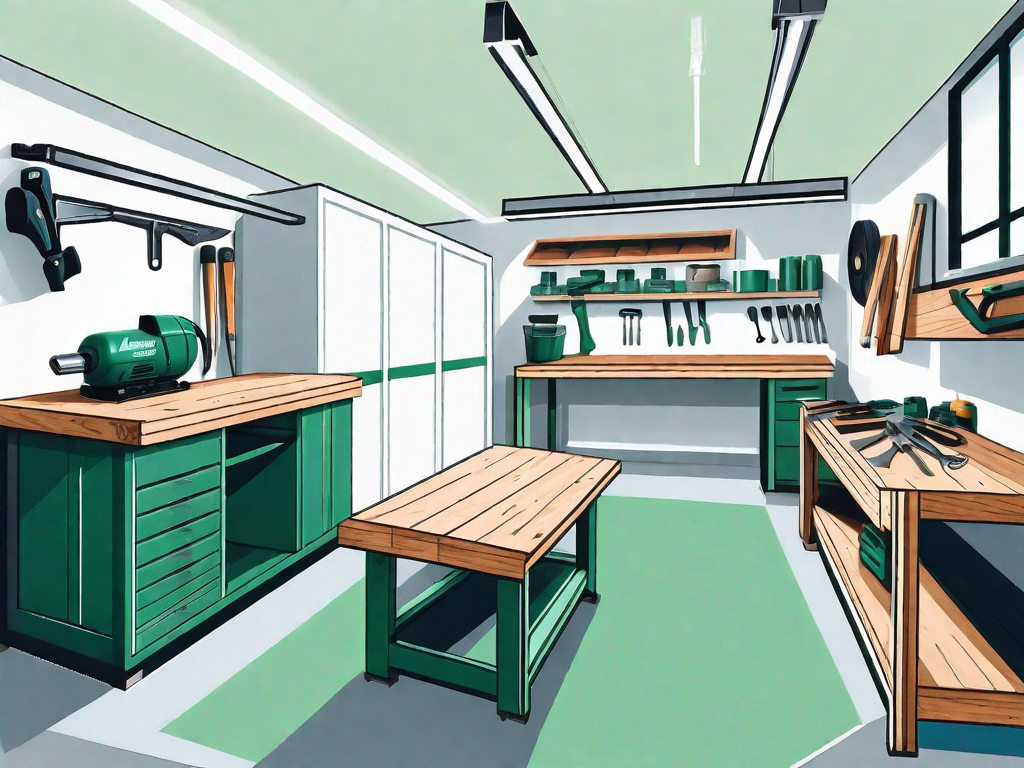Are you experiencing a decrease in braking performance? Do you hear squealing or grinding noises when you apply the brakes? If so, it’s likely that your brake pads are worn and need to be replaced. Brake pads are a crucial component of your vehicle’s braking system, and understanding their importance is essential for maintaining your car’s safety.
Understanding the Importance of Brake Pads
Brake pads play a critical role in ensuring your safety on the road. They are responsible for creating friction against the brake rotors, which in turn slows down and stops your vehicle. Without functioning brake pads, your car’s stopping power will be greatly reduced, putting you and your passengers at risk.
But have you ever wondered how brake pads actually work? Let’s dive deeper into their role in vehicle safety.
The Role of Brake Pads in Vehicle Safety
Brake pads are not just simple pieces of material. They are designed to withstand immense heat and pressure generated during the braking process. When you press the brake pedal, hydraulic pressure is applied to the brake calipers, which then squeeze the brake pads against the brake rotors. This action creates friction, converting the kinetic energy of your moving car into heat energy. The more friction that is generated, the more your vehicle slows down.
By providing consistent stopping power, brake pads ensure that you can come to a complete stop in a controlled manner, avoiding accidents and collisions. Imagine driving down a steep hill without properly functioning brake pads – it would be a terrifying experience, to say the least.
Brake pads are made from various materials, including organic compounds, semi-metallic compounds, and ceramic compounds. Each material has its own advantages and disadvantages, such as durability, noise level, and performance in different weather conditions. It’s important to choose the right type of brake pads for your specific vehicle and driving needs.
Signs of Worn Brake Pads
Recognizing the signs of worn brake pads is crucial for timely replacement. Ignoring these signs can lead to further damage to your braking system and compromise your safety on the road.
One of the most common indicators of worn brake pads is squealing or grinding noises when applying the brakes. This noise is caused by the brake pad wear indicator, a small metal tab that is designed to make contact with the brake rotor when the brake pads are worn down. When you hear this noise, it’s a clear sign that your brake pads need to be replaced.
Another sign to watch out for is a spongy or soft brake pedal. If you notice that your brake pedal feels different or requires more pressure to engage, it could be a sign of worn brake pads. Additionally, if you find that your vehicle’s braking distance has increased, it’s time to inspect your brake pads.
Regularly checking your brake pads for signs of wear and tear is essential for maintaining your vehicle’s braking performance. It’s recommended to have your brake pads inspected by a professional mechanic during routine maintenance or whenever you notice any of the aforementioned signs.
Remember, your safety and the safety of others on the road depend on properly functioning brake pads. So, don’t overlook their importance and make sure to keep them in good condition.
Gathering the Necessary Tools for Brake Pad Replacement
Before diving into the brake pad replacement process, you’ll need to gather the required tools to ensure a smooth and successful job.
Basic Tools Required for the Job
- Jack and jack stands
- Lug wrench
- C-clamp or brake caliper compressor
- Assorted sockets and wrenches
- Wire brush
- Brake grease
- Ratchet or breaker bar
Specialized Tools for Brake Pad Replacement
In addition to the basic tools, there are some specialized tools that can simplify the brake pad replacement process. These include a brake piston reset tool, a brake bleeding kit, and a torque wrench. While not always necessary, they can make the job easier and more efficient.
Preparing Your Car for Brake Pad Replacement
Before you begin replacing your brake pads, it’s important to take some safety measures and position your car for easy access.
Safety Measures Before Starting
Ensure that your car is parked on a level surface and engage the parking brake to prevent the vehicle from rolling. Before lifting your car with the jack, loosen the lug nuts on the wheels you’ll be working on, but do not remove them completely. This will make it easier to remove the wheels once the car is elevated.
Positioning Your Car for Easy Access
If possible, position your vehicle near a wall or sturdy support structure to prevent any accidental movement while working on the brakes. This will provide additional stability and minimize the risk of accidents.
Removing the Old Brake Pads
Now that you’ve gathered the necessary tools and prepared your car, it’s time to remove the worn brake pads.
Steps to Safely Remove Worn Brake Pads
Start by loosening the lug nuts on the wheel you’ll be working on, then use the jack to lift the vehicle until the wheel is off the ground. Secure the car with jack stands for added safety. Once the wheel is removed, locate the brake caliper and remove the retaining bolts using the appropriate tools. Carefully remove the caliper without damaging the brake line or other components. Inspect the brake pads and remove them from the caliper bracket, taking note of their position.
Dealing with Potential Complications
In some cases, the brake caliper piston may need to be reset before installing the new brake pads. This can typically be done using a piston reset tool. Additionally, you may encounter rust or corrosion on the caliper or rotor surfaces. Use a wire brush to clean these areas and apply brake grease as needed.
Installing the New Brake Pads
With the old brake pads removed, it’s time to install the new ones and complete the brake pad replacement process.
Choosing the Right Brake Pads for Your Car
Before purchasing new brake pads, consult your vehicle’s owner manual or consult with a professional to ensure you select the correct type and size for your specific car make and model. There are different types of brake pads available, including ceramic, organic, and semi-metallic, each with their own advantages and characteristics.
Step-by-Step Guide to Brake Pad Installation
Begin by placing the new brake pads in the caliper bracket, ensuring they are aligned correctly. If necessary, reset the brake caliper piston using the appropriate tool. Reinstall the brake caliper and tighten the retaining bolts securely. Once the new brake pads are installed, repeat the process for the remaining wheels. Once all the brake pads are replaced, carefully lower your vehicle and tighten the lug nuts with a torque wrench to the recommended specifications.
By following these steps and taking the necessary precautions, you’ll be able to replace your worn brake pads and restore your car’s braking performance. However, if you’re unsure or uncomfortable with performing this task yourself, it’s always wise to seek the assistance of a qualified mechanic to ensure the job is done correctly and safely.



